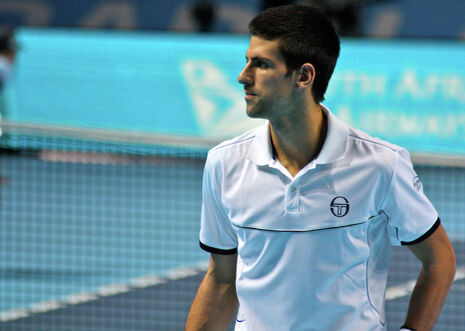Does the West have a home advantage?
Angus Satow explores the global implications of the decision to maintain the ATP tennis championships in London

And the winner is ... Novak Djokovic! Quelle surprise. More interesting at this year’s ATP World Tour finals was the news that London will retain the championships until at least 2018. This ends years of speculation as to whether the tournament was about to move to more exotic climes, with Shanghai one oft-mentioned venue. This means London retains its dominant status in tennis, hosting two of the most popular events in the calendar. Is this really a good thing? And can sport remain so Western-centric in today’s world?
Many would argue not. As the middle classes grow in ‘developing’ countries around the world, so the appetite for sport coverage is growing. Premier League football clubs are investing more and more time in cultivating their Asian and African bases. Likewise the infamous ‘39th’ game idea – of an extra match between Premiership clubs, played around the world – has resurfaced of late. The decisions behind it may be as murky as an Autumn Statement from George Osborne, but football World Cups are also being pushed in new directions: South Africa, Qatar, and undoubtedly more to come. Rugby is looking in new directions too, with the next World Cup taking place in Japan, and Argentina becoming a bigger presence.
Likewise, Formula 1 has become the world’s first truly global sport, with Bernie Ecclestone succeeding in his mission to make the sport he presides over a reflection of today’s capitalist economy. Over the last few decades the trend has been one of East Asian dominance – now less than half of races take place in the old European heartlands. These days, it’s all about the night races in Singapore or Abu Dhabi. Meanwhile, even the most historic of circuits have fallen to the globalisation powerhouse, with Germany falling by the wayside and Monza in Italy in a precarious position.
Tennis gets this. Its Masters events are spread out across the world, from the championships in Dubai to the recently inaugurated China Open. In the ATP and WTA tours, tennis is becoming less Western and less white, both in its tournaments and its players. Yet it cannot make the final leap in its most famous competitions, constrained as it is by leadership structures dominated by white British men and the undeniable advantages of London-centred tournaments. Thus the easy option on this occasion was to maintain the elite end-of-season championships in the snug O2 arena. Thus, too, tennis’s four majors remain firmly in the Global North.
Perhaps there’s a reason for this. The ATP will presumably move around the world at some point, responding to Novak Djokovic’s call for the event to be “exposed to more cities around the world” to improve access to the sport. But the situation is much trickier with the majors. Wimbledon and its strawberries and cream, Roland Garros and its iconic clay, Flushing Meadows and its epic encounters extending well into the night, each major is seared into the minds of every tennis fan. To abolish one for a more representative spread, as F1 has done, would surely be to lose something essential. Wimbledon is what gets millions around the worldinterested in the sport – by abolishing it tennis would be shooting itself in the foot.
That doesn’t mean sport won’t have to change, however. In golf’s case, the Masters at Augusta must surely be maintained at all costs – its beauty and history ensure its place in golfing lore. But golf will struggle to continually justify having three majors in the United States, while more and more people take up the sport in the country’s main global competitor, China.
This touches on yet another complication in the mix. These sports are global now, but they’re Western constructs, with a legacy of exclusion behind them. Augusta is beautiful in its flowers and in its lawns, but dig a little deeper and you find an extraordinary legacy of racism and sexism. Society must find a way to bridge this uneasy divide between the pretty face of the sport and the ugly past behind it.
This is the tension underlying all sport in the coming years. As the example of the O2 has proved, sports across the spectrum will have to balance a tightrope between tradition and innovation, between the old venues that have made it so special, and the new venues that want a piece of the pie. A collision is inevitable.
 News / Police to stop searching for stolen Fitzwilliam jade17 April 2024
News / Police to stop searching for stolen Fitzwilliam jade17 April 2024 Interviews / ‘It fills you with a sense of awe’: the year abroad experience17 April 2024
Interviews / ‘It fills you with a sense of awe’: the year abroad experience17 April 2024 News / Night Climbers call for Cambridge to cut ties with Israel in new stunt15 April 2024
News / Night Climbers call for Cambridge to cut ties with Israel in new stunt15 April 2024 Sport / Kabaddi: the ancient sport which has finally arrived in Cambridge17 April 2024
Sport / Kabaddi: the ancient sport which has finally arrived in Cambridge17 April 2024 Features / Cambridge’s first Foundation Year students: where are they now?7 April 2024
Features / Cambridge’s first Foundation Year students: where are they now?7 April 2024





